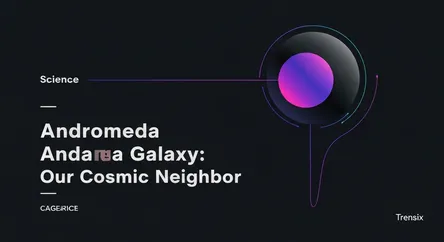Science
Andromeda Galaxy: Our Cosmic Neighbor

Discover the Andromeda Galaxy (M31), our closest major galactic neighbor, and learn about its future collision course with our own Milky Way.
What is it?
The Andromeda Galaxy, also known as Messier 31 (M31), is the nearest major galaxy to our Milky Way. Located approximately 2.5 million light-years from Earth, this massive spiral galaxy is the largest member of our Local Group of galaxies. Visible to the naked eye from a dark location, it appears as a faint, fuzzy patch in the constellation Andromeda. It's estimated to contain one trillion stars, more than double the number in the Milky Way, and spans about 220,000 light-years across.
Why is it trending?
Andromeda is a constant subject of astronomical study and public fascination due to its impending collision with the Milky Way, predicted to occur in about 4.5 billion years. New observations from powerful telescopes like the Hubble and the James Webb Space Telescope frequently reveal stunning details about its structure, star clusters, and the supermassive black hole at its core. These findings generate excitement and media coverage, keeping our cosmic neighbor in the scientific spotlight.
How does it affect people?
While the future galactic collision poses no immediate threat—the vast distances between stars make direct stellar collisions highly unlikely—studying Andromeda has a profound impact. It serves as a crucial laboratory for understanding how galaxies form, evolve, and interact. By observing Andromeda, astronomers can better predict the long-term future of our own Milky Way. For the public, it inspires awe and curiosity about our place in the universe, driving interest in science and space exploration.